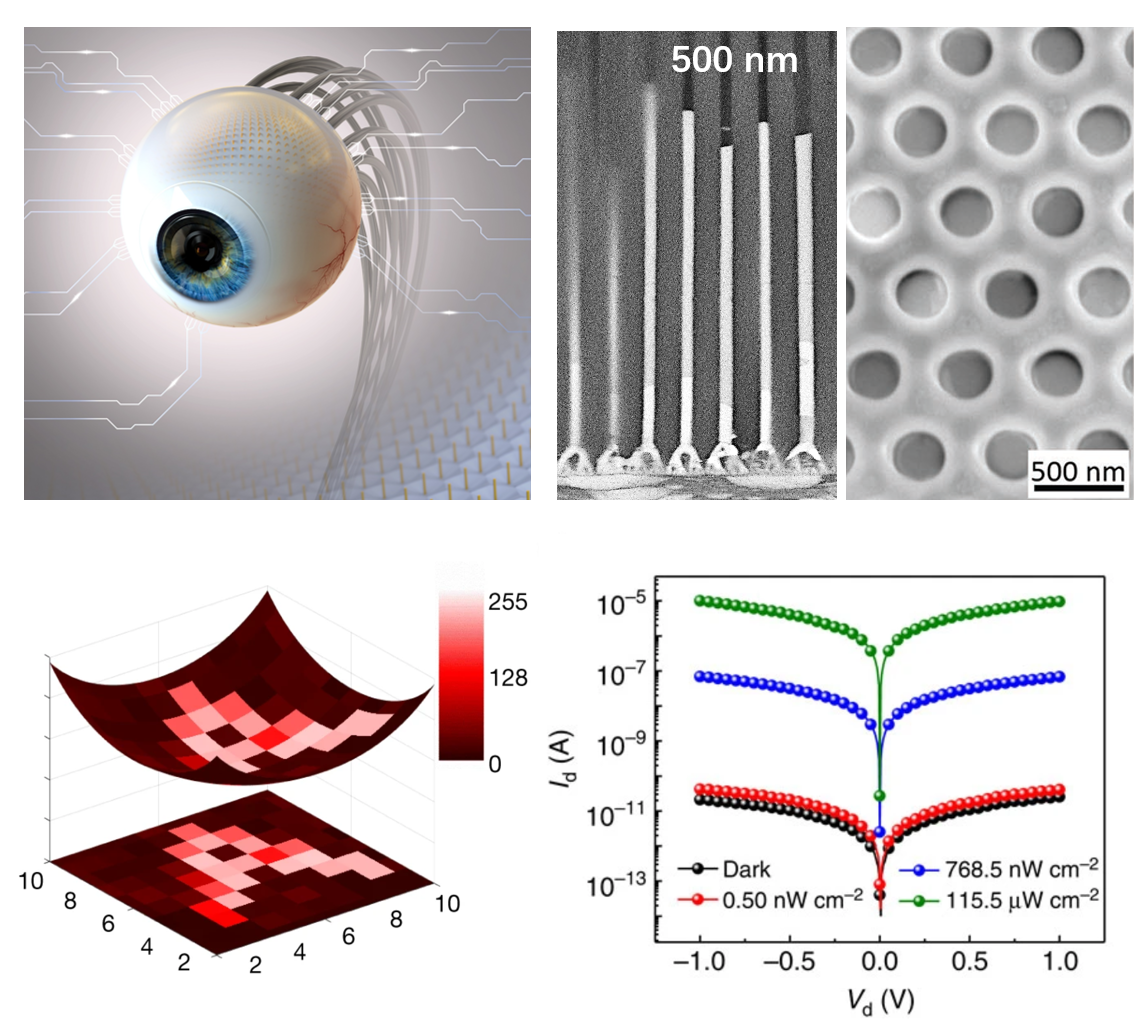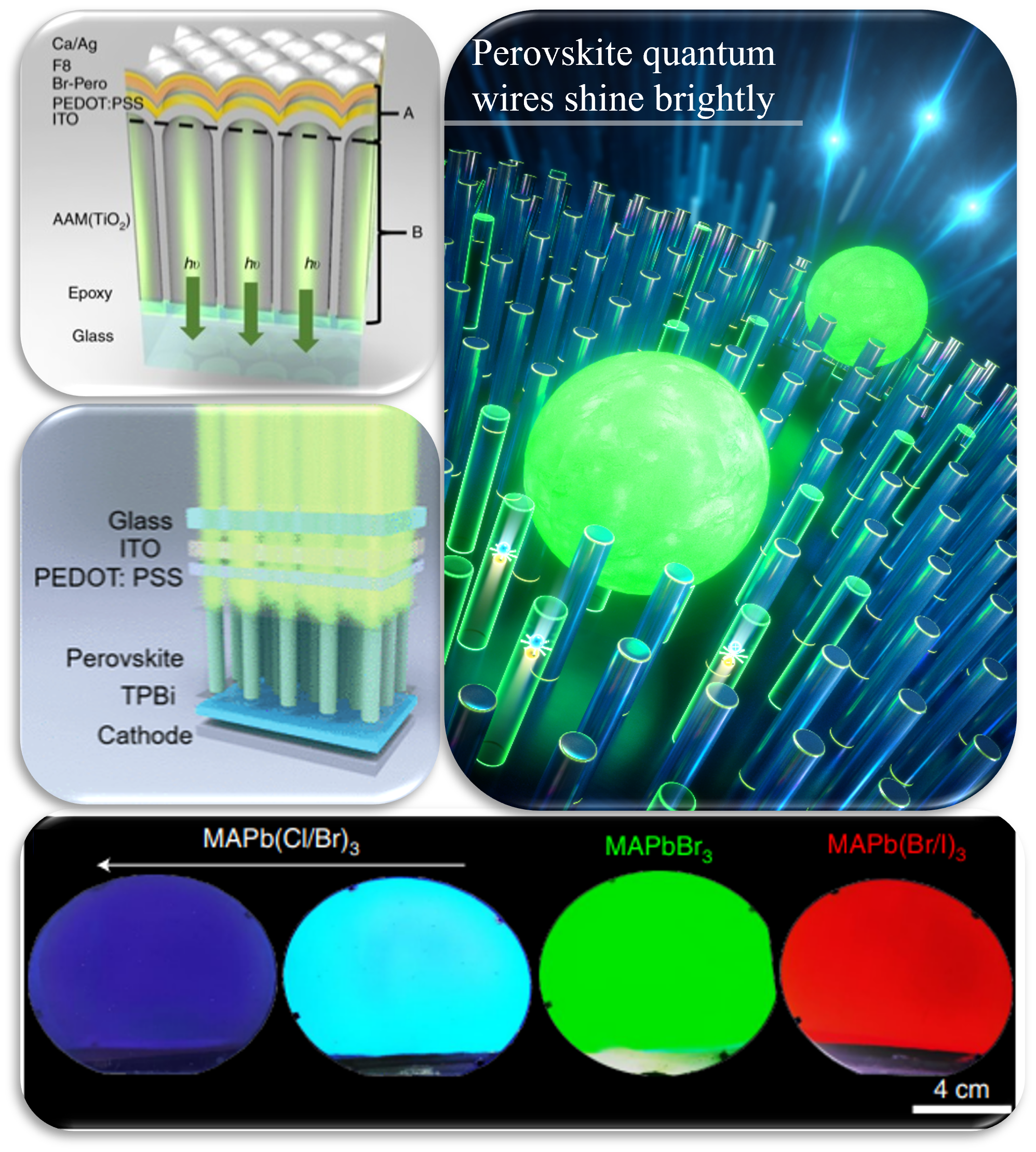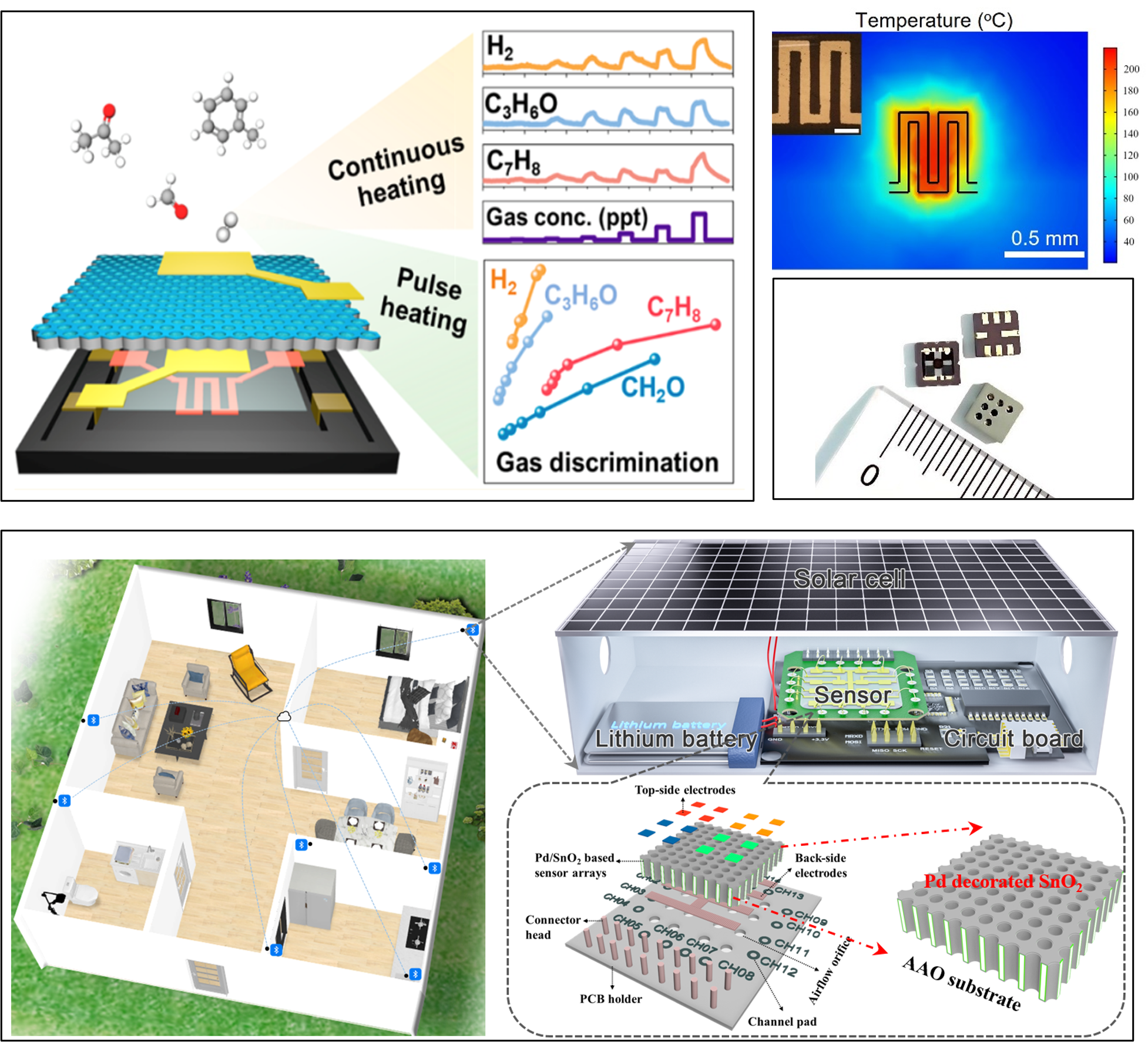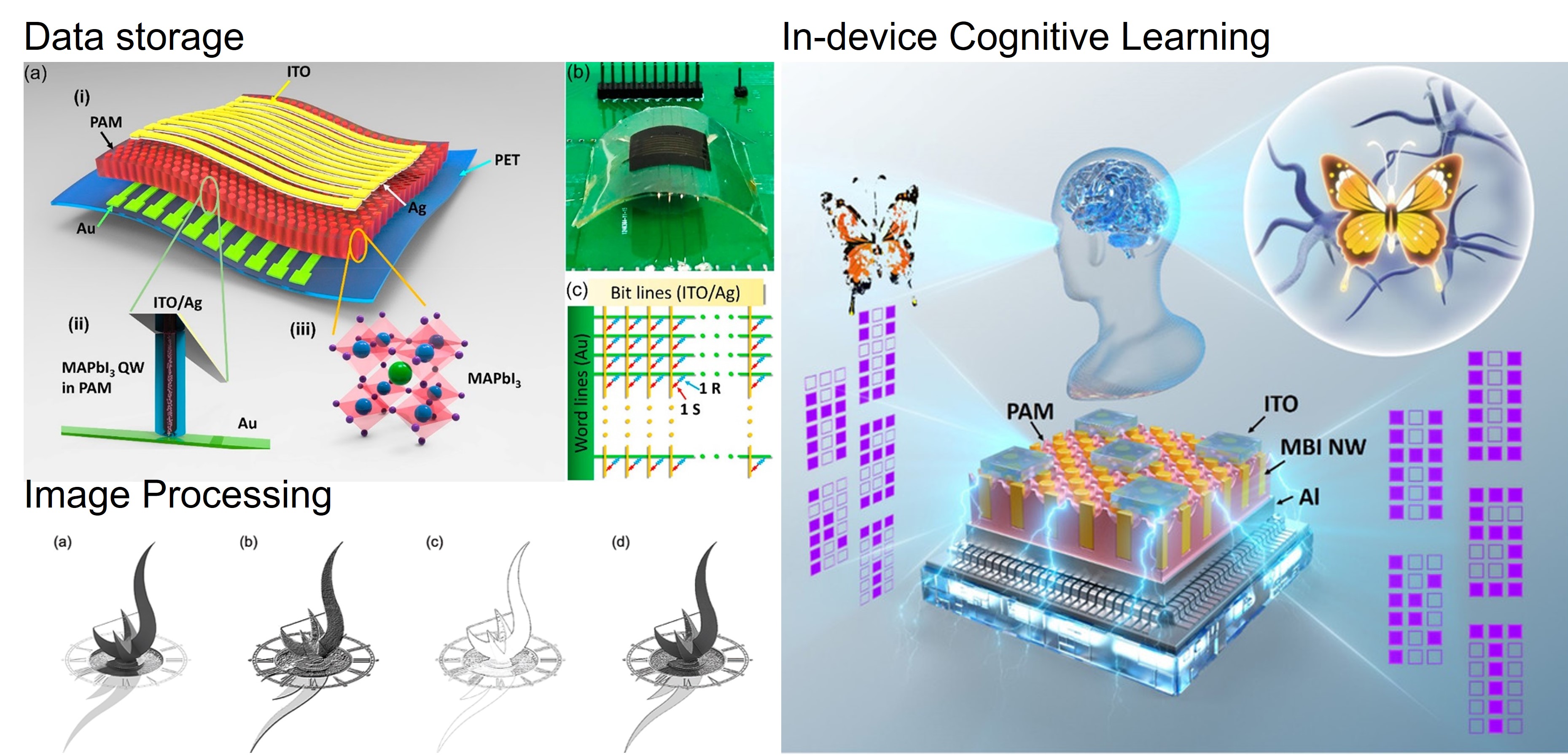
- Bionic Eyes and Photodetectors
- Perovskite Light-emitting Diodes and Displays
- Bionic Nose and Gas Sensors
- ReRAM and Neuromorphic Devices
| Bionic Eyes and Photodetectors |
|---|
|
Biological eyes are well-developed image sensing systems, capable of capturing high-resolution images with an exceptionally wide field of view and low aberration. Bionic eyes with similar capabilities are highly desired in the field of vision technology. Our group is developing curved nanowire array image sensors that closely replicate the structure and exceptional features of biological eyes. The devices can significantly improve the efficiency of machine vision and robotics. Meanwhile, our group is exploring dense optoelectronic nanowire arrays that could potentially replace deceased photo receptor cells and shows potential in visual prosthetic applications. Photodetectors are the basic units in optoelectronics applications. Our group is focused on material, interface and device engineering to create photodetectors with high sensitivity, speed and environmental adaptivity, along with novel features such wavelength selectivity and in-device computing. [1] L. Gu, et al. Nature 581, 278–282 (2020). [2] Y. Ding, et al. Sci. Adv. 8, eabq8432 (2022). [3] Z. Long, et al. Nat. Commun. 14, 1972 (2023). [4] X. Liu, et al. Nat. Commun. 5, 4007 (2014). [5] L. Gu, et al. Adv. Mater. 28, 9713-9721 (2016). |
| Perovskite Light-emitting Diodes and Displays |
|---|
|
Metal halide perovskite materials have been widely explored for efficient light-emitting diodes (LEDs) because of their superlative figures-of-merits, such as facile synthesis, efficient radiative recombination, remarkable color purity, and bandgap tenability. Here we have developed a variety of strategies to improve the device performance, including: 1) utilizing nanophotonic substrates to boost light out-coupling efficiency; 2) fabricating perovskite nanowires/quantum wires to increase carrier radiative recombination rate; 3) introducing anodic alumina templates to enhance stability, flexibility and scalability; 4) engineering material compositions (additives, hybrid 2D-3D phases, etc.). We have also developed high-resolution display panels based on perovskite LEDs. [1] D. Zhang, et al. Nat. Photonics 16, 284-290 (2022). [2] Q. Zhang, et al. Nat. Commun. 10, 727 (2019). [3] Y. Fu, et al. ACS Nano 16, 8388-8398 (2022). [4] Q. Zhang, et al. ACS Nano 14, 1577-1585 (2020). [5] Y. Fu, et al. Adv. Funct. Mater. 30, 2002913 (2020). |
| Bionic Nose and Gas Sensors |
|---|
|
Gas sensors have performed the critical roles in various domains, such as environmental monitoring, security alarm, industrial control, and health diagnosis. Here, we have focused on sensing material exploration, device structure design, thermal management, algorithm optimization to improve the sensing performance, including: 1) fabricating nanotubes sensing platform with tunable pore sizes and depths on well-defined AAO substrate to promote the utility of sensing materials; 2) designing novel porous alumina MEMS-based high performance gas sensors with ultra-low power consumption as compared to commercial Si-based MEMS gas sensors; 3) engineering monolithic sensor array chip coupled with AI algorithms to enable bionic noses for enhanced discrimination capability. We aim to promote the cutting-edge sensing technologies for more practical applications that can generate social impact. [1] Z. Song, et al. Small 18, 2203212 (2022). [2] W. Tang, et al. ACS Nano 16, 10968–10978 (2022). [3] Z. Song, et al. ACS Nano 15, 7659-7667 (2021). [4] J. Chen, et al. ACS Nano 12, 6079–6088 (2018). [5] X. Pan, et al. ACS Nano 7, 9318–9324 (2013). |
| ReRAM and Neuromorphic Devices |
|---|
|
Ultra-high density perovskite nanowires embedded in a porous alumina membrane are utilized to develop the switching matrix of Resistive RAMs, intended for applications in data storage and neuromorphic computing. Retention time > 20 years, endurance > 5 million cycles, switching speed of 100 ps, 14 nm lateral sized memory cell, optoelectrical memorization have been achieved with the data storage devices. In the genre of brain-inspired computing, we have been able to implement physical artificial neural networks with stable synaptic states (retention > 1e5 seconds and jitter < 10%) for image processing applications and for emulating cognitive learning models in humans. Future work in this domain shall encompass exploring complex in-memory computing applications and further uplifting of perovskite nanowires based Resistive RAMs to the commercial standard. [1] S. Poddar, et al. Nanoscale Horiz. 7, 759-769 (2022). [2] S. Poddar, et al. Adv. Intell. Syst. 4, 2200065 (2022). [3] Y. Zhang, et al. Sci. Adv. 7, eabg3788 (2021). [4] S. Poddar, et al. Nano Lett. 21, 5036-5044 (2021). [5] S. Poddar, et al. Nanoscale 13, 6184-6191 (2021). |



